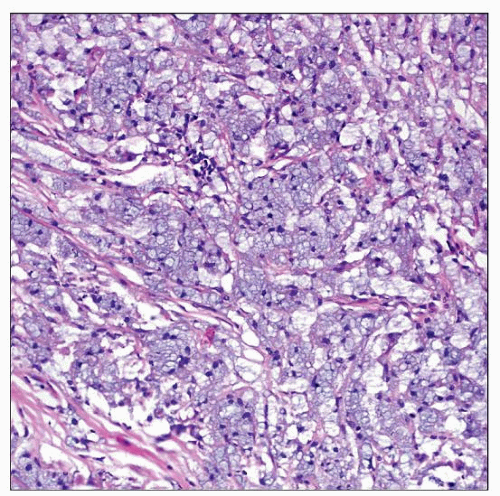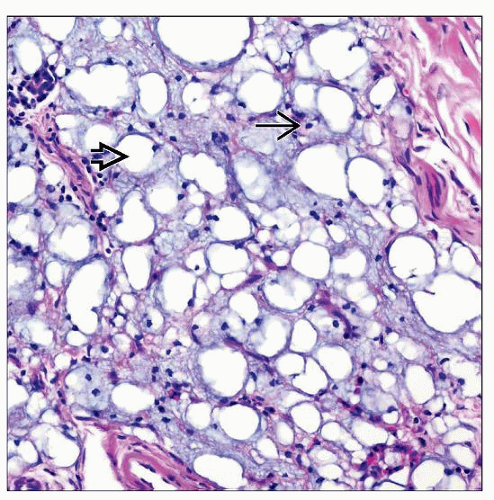Polyvinylpyrrolidone Storage Disease
Cyril Fisher, MD, DSc, FRCPath
Key Facts
Etiology/Pathogenesis
Phagocytic foreign body-type reactive condition
Found in aerosol hair sprays, adhesives, lithographic solutions, shaving products, plastics
Used to improve clarity and stability of wine and fruit juice; used in oral medications and Betadine
Presents as skin rash with nodules and macules, untreatable anemia due to bone marrow involvement
Microscopic Pathology
Histiocytes with blue-gray, bubbly cytoplasm, in small groups or large sheets
No nuclear atypia or mitotic activity
Giant cells may be present
PAS, Alcian blue, and Giemsa negative
Mucicarmine, Congo red, Sirius red, and colloidal iron positive
Immunoreactive for CD68 and CD163
 Low-magnification image of PVP storage disease shows soft tissue infiltrated by sheets and nests of uniform macrophages containing basophilic material in their cytoplasm. |
TERMINOLOGY
Abbreviations
Polyvinylpyrrolidone (PVP) storage disease
Synonyms
Mucicarminophilic histiocytosis
Polyvinylpyrrolidone granuloma
Definitions
Phagocytic foreign body-type reactive condition in which PVP is deposited and retained in tissue
ETIOLOGY/PATHOGENESIS
Causes
Synthesized during World War II, used intravenously as plasma expander
Stay updated, free articles. Join our Telegram channel

Full access? Get Clinical Tree





